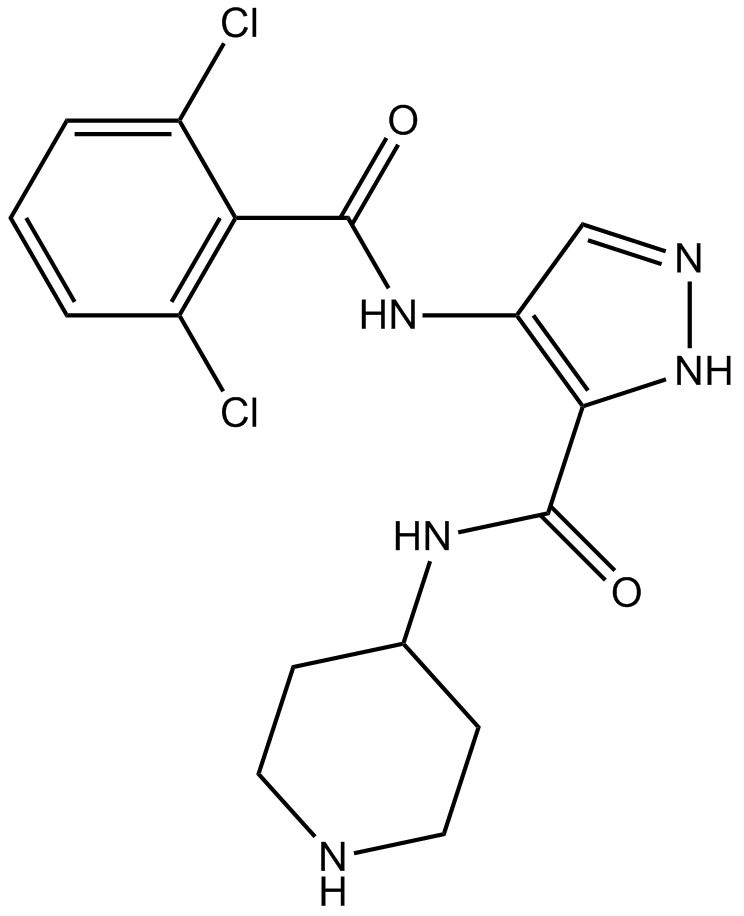AT7519 |
| Catalog No.GC15870 |
AT7519 (AT7519M) como un potente inhibidor de las CDK, con IC50 de 210, 47, 100, 13, 170 y <10 nM para CDK1, CDK2, CDK4 a CDK6 y CDK9, respectivamente.
Products are for research use only. Not for human use. We do not sell to patients.

Cas No.: 844442-38-2
Sample solution is provided at 25 µL, 10mM.
AT7519 is a small-molecule inhibitor of cyclin-dependent kinases (CDKs) with IC50 values of 210, 47, 100, 13, 170 and <10 nM for CDK1, CDK2, CDK4, CDK5, CDK6 and CDK9, respectively [1].
AT7519 showed no inhibition activity against CDK3, 7 and other non-CDK kinases. It inhibited CDK1 in an ATP- competitive manner with Ki value of 38 nM. AT7519 potently inhibited the proliferation of various human tumor cell lines and this activity is cell cycle related. AT7519 was also effective in cell lines with p53 mutants or suppression, suggesting that the anti-proliferation efficacy is p53-independent. In HCT116 cells, 24 h-treatment of AT7519 resulted in a remarkable induction of G0-G1 and G2-M cell cycle arrest. Besides that, AT7519 at concentrations relating to IC50 induced cell apoptosis (24 h) in HCT116, A2780 and HT29 cells with 52%, 3% and 94% survival, respectively. Moreover, in HCT116 tumor-bearing mice, 10 mg/kg AT7519 with intraperitoneal injection caused inhibition of NPM phosphorylation and induced apoptosis [1, 2].
References:
[1] Squires M S, Feltell R E, Wallis N G, et al. Biological characterization of AT7519, a small-molecule inhibitor of cyclin-dependent kinases, in human tumor cell lines. Molecular cancer therapeutics, 2009, 8(2): 324-332.
[2] Wyatt P G, Woodhead A J, Berdini V, et al. Identification of N-(4-Piperidinyl)-4-(2, 6-dichlorobenzoylamino)-1 H-pyrazole-3-carboxamide (AT7519), a Novel Cyclin Dependent Kinase Inhibitor Using Fragment-Based X-Ray Crystallography and Structure Based Drug Design†. Journal of medicinal chemistry, 2008, 51(16): 4986-4999.
Average Rating: 5 (Based on Reviews and 24 reference(s) in Google Scholar.)
GLPBIO products are for RESEARCH USE ONLY. Please make sure your review or question is research based.
Required fields are marked with *




















